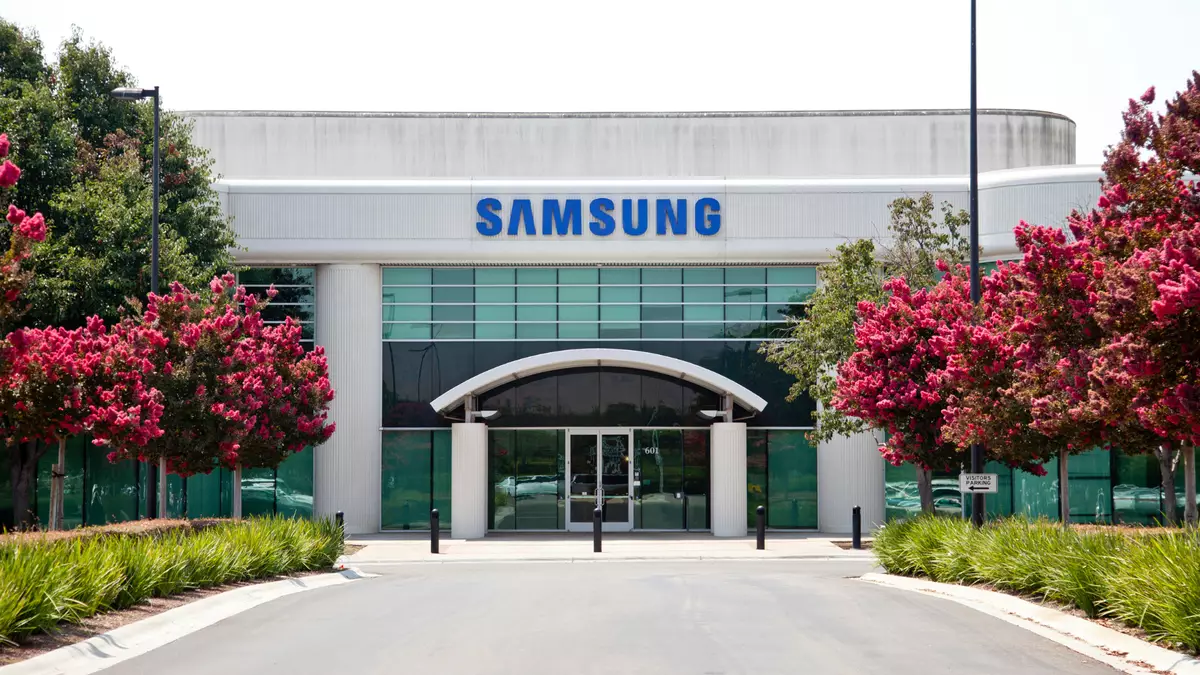In a landscape dominated by fluctuating tariffs and trade uncertainties, Samsung Electronics has managed to carve out a surprising advantage. As manufacturers face the brunt of escalating tariffs imposed by the U.S., Samsung reported an impressive operating profit of 6.6 trillion won (approximately $4.47 billion) for the first quarter of this year. This figure not only exceeded earlier projections of 5.1 trillion won ($3.4 billion) but also highlighted Samsung’s ability to adapt swiftly to shifting market dynamics. The profits, while slightly lower than the same quarter last year, denote a significant rebound from the previous quarter’s figures, showcasing a versatile response in challenging times.
The Driving Force: Inventory Management
A critical factor behind Samsung’s profit surge has been the strategic behavior of its customers. In response to looming tariff threats from U.S. President Donald Trump, who initially imposed a blanket 10% tariff on imports—subsequently increasing it to a staggering 32% for several countries including China and Vietnam—many manufacturers opted to secure their inventory ahead of potential cost increases. This has transformed the traditionally efficient Just-in-Time (JIT) manufacturing philosophy into a more warehouse-oriented approach, where companies are stockpiling essential components like memory chips from Samsung. Analysts are optimistic that despite a downturn in memory prices, the tactical purchasing decisions made by customers will continue to buoy Samsung’s shipments, at least temporarily.
The Ripple Effects on the Tech Industry
The ramifications of these tariffs extend well beyond Samsung. Other players within the tech ecosystem are feeling the pressure. For instance, Nintendo recently withheld preorders for its anticipated Switch 2 in the U.S., with executives possibly recalibrating prices to account for potential tariff impacts. Framework, a company known for its modular laptops, faced a similar conundrum, ultimately deciding to halt sales of its lower-cost models to prevent financial losses. The cyclical nature of tariffs and their cascading effects on pricing highlight the precarious nature of supply chains in the modern tech industry.
Market Sentiment and Future Projections
However, the euphoria surrounding Samsung’s recent performance may be short-lived. Analysts predict that shipments could begin to decline in the second quarter of the year. This sentiment is fueled not only by the recent surge in inventory purchases but also by the unpredictable nature of international trade relationships. Companies like Samsung, which hinge on consistent demand and supply chain stability, are now exposed to volatility in both their operational processes and financial performance. The ongoing market adjustments could very well lead to a paradox: while Samsung is capitalizing on current demand, the inevitable backlash from consumers facing rising prices may dampen long-term growth.
Implications for Global Supply Chains
The current environment compels manufacturers to think critically about their supply chain strategies. Should they continue to buy in bulk and take on the risks associated with inventory storage, or return to a leaner, just-in-time setup that minimizes costs? This dilemma underlines a broader challenge facing the global tech industry—a challenge that may very well redefine production models in the years ahead. Manufacturers must also contend with geopolitical factors affecting the international trade framework, as tariffs evolve and fluctuate based on diplomatic relations. Companies must embrace agility and innovative approaches in anticipating market shifts.
The Consumer’s Dilemma
Ultimately, the consumer will bear the brunt of these tariff-induced changes. Price hikes are an inevitable consequence as distributors pass on the increased costs to end-users. A rise in product prices without a corresponding increase in quality or features creates a precarious triangle for businesses: they could drive away price-sensitive customers, leading to significant drops in demand. As new products enter the market amid this chaos, consumers will weigh their options more carefully than ever before, and tech companies must be prepared for an ever-more discerning clientele.
The road ahead appears fraught with challenges, but it is precisely within this tumult that companies like Samsung have an opportunity to establish themselves as innovators and industry leaders. Their ability to respond adeptly to market pressures could redefine the competitive landscape of the tech industry in the face of adversity.


Leave a Reply